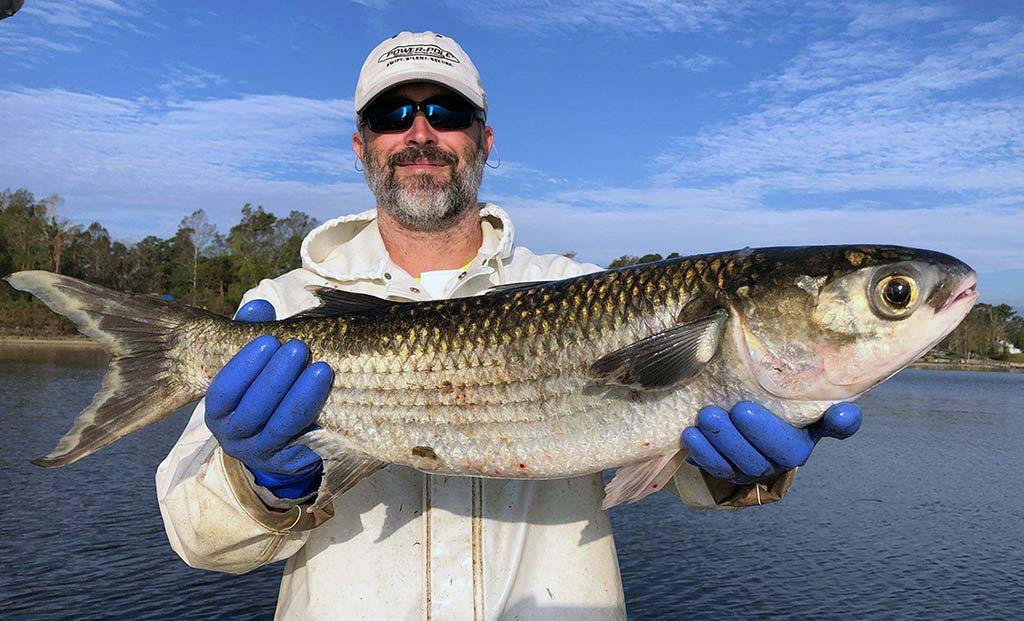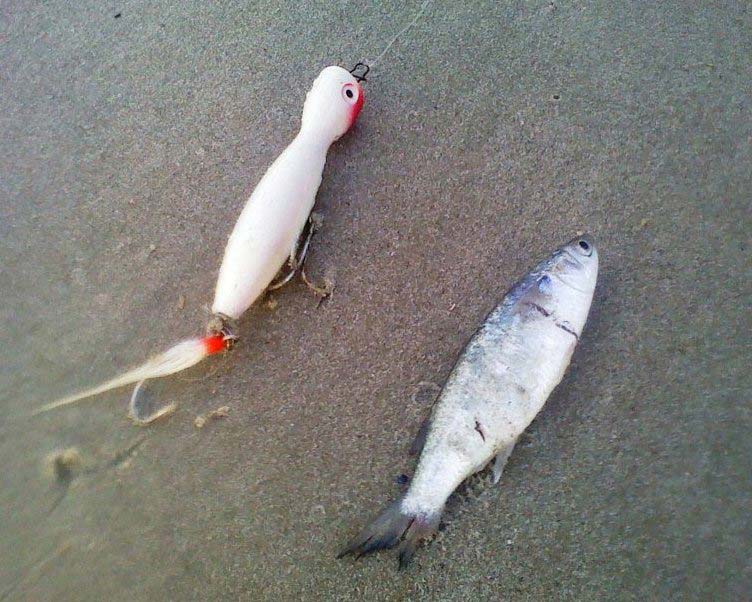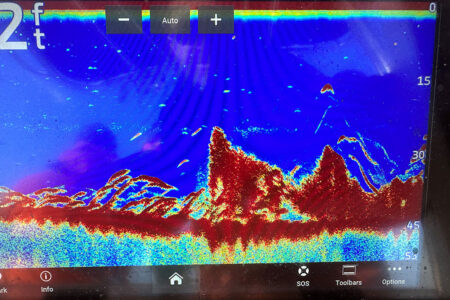
This cigar shaped striper candy sure stands out in the bait crowd.
Striped mullet are distributed worldwide in most coastal waters and estuaries of tropical and subtropical seas. This species is primarily found in estuaries and freshwater areas until they begin their spawning migration out to the sea during the fall. Striped mullet serve as a natural link between both microscopic organisms and top predators found in the local marine food chain.
As with Atlantic menhaden, mullet makes excellent bait while pursuing several species including flounder, red drum, king mackerel and amberjack. This species has a long, cylindrical body, a comparatively small mouth for their body size, and widely separated dorsal fins, along with thick, fleshy eyelids that give the appearance that the fish is sleepy and ready for a nap. They have bluish-green backs that fade into white bottoms and approximately six horizontal stripes on their sides, which is how they got their name.
I find this fish is very easy to identify as compared to the other variety of fish we see migrating up and down the Atlantic coast each year. Mullet stand out from the crowd with their large pectoral fins that are displayed on the top third of their body just behind the gill plate. When extended they remind me of a German U-boat’s rudders and pectoral fins do not appear this way on any other species of fish we pursue along the coast. The majority of other gamefish have pectoral fins proportionately smaller and located on the lower third of their bodies just behind the gill plate.
Striped mullet are referred to as catadromous, animals that spend their adult lives living in freshwater, but return to the sea to reproduce. Striped mullet grow to about 6.1 to 7.3 inches fork length during the first year of life and may live to be between 9 and 13 years old. Usually, this species does not get any larger than about 20 inches total length. Females mature at 2 to 3 years, or at about 11-1/2 inches in Florida waters. Records do show that this fish can get to be quite large, and grow to lengths of 47 inches and weigh over 17 pounds.

Striped mullet feed on microorganisms such as bacteria and single-celled algae found on aquatic plants, in mud, silt, and sand and in decaying plant material. As an important contributor to the local food chain, striped mullet are prey species to top predators such as birds, fish, sharks and porpoises. They are highly fecund and may deposit upwards of 4 million eggs for a large female and spawn in large congregations ranging from offshore areas shoreward towards inlets near the coast. Spawning individuals have been reported from September to March; however, peak spawning activity occurs from October to early December.
The fish will stay close to shore as they migrate south to over-wintering grounds. As with menhaden, you may see them schooling in large numbers right at the surface in a flurry of water ripples as they move south. Bluefish are often the first species to locate and feed upon the mullet as anglers may hook into a hungry school of 3- to 10-pound bluefish driving mullet up into the shallows. Typically in early October, depending upon water temperatures, migrating striped bass will join in on the fun and gorge on the mullet. Ocean facing beaches are the best locations to try and hook into a large striper moving back south to Chesapeake Bay to over-winter.
Mullet usually school just under the waves like the menhaden do, staying at or just under surface. The best way to tie into a large bass, or bluefish frenzy feeding on mullet is to utilize pencil poppers, metal-lipped swimmers, and cup-faced poppers. Using either live, or frozen mullet is still one of the preferred options while in pursuit of both bluefish and striped bass during fall migration months
Adult mullet live in coastal fresh water, and have a very high tolerance of salinity. Mullet are known to leap out of the water frequently, and scientists believe this may help them clear their gills, and give them a boost of oxygen when traversing oxygen-poor waters. Striped mullet is a very cool fish to watch leaping from the water, and are easy to tell apart from other migratory fish in our North Atlantic waters.
Needless to say, two of our favorite migrating gamefish – stripers and choppers – really like snacking on these silvery swimmers, giving us good reason for wanting to get our hands on these fish!


